To reach one of the most popular bed-and-breakfasts in Chicago, make your way to Bridgeport, a gritty, working-class neighborhood on the South Side. Across the street from a modest house that survived the Great Chicago Fire of 1871, you will find a magnificent neo-Gothic church. Go up a 35-step winding staircase and you will find the Loft.
The Loft’s location above a church is not the only hint that this B&B is atypical. The wall of the steep stairwell is emblazoned with a biblical inscription in a flowery font: “Blessed shalt thou be when thou comest and blessed shalt thou be when thou goest.” A sketch in the apartment illustrates the passion of Christ. In the bedrooms, guests can hear the Gregorian chants from the church below.
The Monastery of the Holy Cross, the only urban monastery in the country, is home to 10 Benedictines: nine monks (four of whom are also priests) and one novice. They took over a parish that closed in 1989 when the Archdiocese of Chicago shuttered dozens of churches and schools to cut costs. Unlike monks in most monasteries, located in the country and able to farm or raise animals, the Chicago monks had to find another way to make ends meet.
Retreat visitors who enjoyed their overnight experience urged the monks to provide better, more permanent accommodations. So besides selling simple wooden coffins made by fellow monks in rural Indiana, the Chicago monks now also operate two B&B apartments and a retreat house.
Travelers who stay at the B&B don’t always notice the Catholic presence. A guest once bumped into Father Edward Glanzmann, who helped found the monastery in 1990, and was surprised by his black Benedictine habit. “Do you only put that on when guests are here?” she asked him. “She thought it was part of our sales pitch,” explains Glanzmann with a laugh.
The neighborhood around the monks teems with the regular rhythms of work, school, and recreation. In contrast, the Benedictines belong to a contemplative order. Their minds focus on what comes after we shake off the mortal coil. Although Chicago may seem like an unlikely place for these monks, they believe the surrounding city connects them to their mission.
“Everything we do is with a view to heaven,” says Glanzmann. “Our priorities are very different. It’s always about heaven here. That’s the ultimate goal of our lives.”
A providential history
Monasteries in Europe have hosted travelers for centuries. Hospitality is an ancient monastic tradition that began when pilgrims needed a bed on their way to religious shrines.
The founder of Western monasticism, St. Benedict was hardly the first Christian leader to organize followers and direct them to live in common. But he did write the Rule of St. Benedict, which found its way to monasteries across the Christian world. The Rule meticulously set forth regulations for clothing, sleeping arrangements, food and drink, care of the sick, recruitment of new members, and even the reception of guests.
Chapter 53 of the Rule opens with, “Let all guests who arrive be treated like Christ.” The monks of Holy Cross strive to uphold this aspect of the Rule.
Living a contemplative life does not seem like it would lend itself to hospitality, but it is an important aspect of the monks’ vocation. Thomas Merton once said the contemplative life can be summarized by three words: now, here, and this. He said it was being “fully awake, fully active, fully aware.”
Benedict praised this fully active life through emphasizing the virtue of work, putting it almost on par with prayer. Work was a way to God, and hospitality is a continued aspect of the work of Benedictine monks.
To fulfill the work of receiving guests, it is typically Benedictine sisters who run B&Bs, rather than monks. There is nothing quite like the Monastery of the Holy Cross in Chicago. “When people think of contemplatives, they often think of nuns. But our ministry at Holy Cross is hospitality,” says Glanzmann.
The location of Holy Cross in Chicago was accidental. Three monks, two of whom had been missionaries in Brazil and one in Haiti, returned to the United States to evangelize here. They lived first in Minnesota before seeking a new home. After visiting several cities, they preferred Milwaukee to Chicago, which had a history of troubled relations between religious and the chancery.
But Chicago, not Milwaukee, had closed churches, and Cardinal Joseph Bernardin formally invited the community to Chicago in 1990. “You are my answer for my prayers to God. When I got your letter, I dropped to my knees in prayer,” the cardinal told Glanzmann and the other two monks.
Still, after a day of visits to closed churches, the monks remained dissatisfied. None were quite right. Then a blue-collar worker at the chancery told them to visit Immaculate Conception in Bridgeport. “I know it’s what you’re looking for,” he told them. It was—the acoustics, especially, as well as its timeless beauty and grandeur.
A second providential development was the purchase of an adjoining house. At the time the area around the monastery was rife with drug dealing, graffiti, and rough-hewn residents. The house next door was a particular source of irritation. Monks on pilgrimage to the Basilica of the National Shrine of the Immaculate Conception in Washington, D.C. prayed for a resolution.
At the same time a frequent visitor to the monastery who worked for the Drug Enforcement Agency learned of the troubled property and vowed “to make a few calls.” The next thing the monks learned was that the house was for sale. They dubbed it Ascension House. The monks refurbished the two-story property, which now serves both as the retreat house and a second B&B.
A monk’s life
Father Timothy Ferrell, guestmaster of the B&B, grew up 35 miles west of the city in a prosperous suburb. He embodies the mystery of transformation. “If you told me when I graduated from high school I’d be a Benedictine monk I would have laughed you out of the room. I was not even Catholic,” says Ferrell.
Two factors during and after college changed his mind. “I had a burning desire to ask the big questions and look for answers,” says Ferrell. “It started with an interest in politics, but I was always led to faith, instead, to find answers.” His transformation was also rooted in lived experience. “I discovered I was a sinner. I didn’t always make the right decisions on how to use my freedoms,” he says. A professor at the University of Virginia, where Ferrell had been a student, told him about the monastery in Chicago.
“That was providential,” he says. “I had exhausted all my resources, and God put people in place to lead me here. It was all prepared by God, not something I sought out.”
Ferrell lives in a small cell with a bed, a desk, a lamp, two chairs, some books, and a couple shirts and pairs of pants. What few possessions monks own they own in common. “It’s a real challenge to receive everything from somebody,” Ferrell says. “But the same truth applies to all of us, who are dependent on God. We learn a dependence on God in a new way.”
The monks at Holy Cross range in age from 24 to 71. The average age is 49, considerably younger than at other monasteries. The older monks at Holy Cross are cradle Catholics, tightly tied to their faith since childhood. The younger ones are either Catholics who at some point and in varying degrees fell away from the faith or converts.
Rising for 3:30 a.m. vigil, the monks pray eight times a day, gather for meals in somber silence, and abstain from modern preoccupations like surfing the internet or checking cell phones for texts or scores of ball games.
Most of us, even devout Catholics, tend to have two feet firmly planted in the affairs of the everyday world and perhaps only occasionally make sideways glances at eternity. To visit the monastery is to pierce the veil, to enter a realm next door to us in space but sanctified in an obvious way.
“It feels like prayer lives in the walls there,” says Amy Frykholm, a Colorado resident who has stayed at the monastery’s B&B when traveling for work. “You can feel it. You smell the incense. It’s like entering another world,” she says.
It’s easy for first-time visitors to quickly conclude that the monks are holier than the rest of us, that the monastery is one or two levels closer to heaven than home and work, and that the monastery is an automatic refuge, a place where personal problems and routine anxieties can melt away.
But the truth is more complicated than that. The presence of the medieval-like rituals amid the cacophony of a city says more about the holiness of the city and inevitable trajectory of all our disparate lives. The monastery in the city speaks to the ultimate significance and power of God’s presence, will, and love.
The surest way to find the monks after stepping onto the monastery grounds is to enter the church, built by impoverished immigrants in 1910. With concentrated gazes, the monks pray ceaselessly, day after day, year after year. The notable exception to the communal prayer is one day each month called dies non, in which the monks scale back to give themselves time for rest, more solitude, and private prayer.
The black-robed monks diligently face one another in the monastic choir, pews toward the front of the church tilted toward one another. It’s hard to pinpoint the monks’ eyes. The monks don’t stare at one another, nor do they fix their gaze on anything in particular. They seem to be looking into the distance. Their singing is soft but strong. It’s ethereal, organic, and not so much medieval as primeval, coming from deep inside them and soaring to somewhere far from them.
After the prayers, the monks return to work. It is not uncommon to see a monk, dressed in a dark robe despite the stifling heat, stop in the sun to pick weeds alongside the church. Work and prayer are the cornerstones of Benedictine life. The monks here primarily cook and clean. Guests are frequent. Getting a reservation between Easter and Thanksgiving can be problematic. Some travelers try for years to make a booking before they succeed.
City of God
Houses adjoin the monastery’s property, and city life presses on. Next door, hidden behind a weatherworn fence, children noisily splash in a pool. In the alley behind the church a middle-aged man rolls out his lawn mower from his garage, and a hard-hatted worker for a cable company ascends into the air in a truck’s bucket. “We live cheek by jowl with our neighbors,” chuckles Ferrell.
Just north of the church is a leafy park and next to that is a nondescript, brick grade school. The rest of the street is a hodgepodge of businesses: Maria’s liquor store, Alex Auto Repair, and Bridgeport Transmission. While city life hums in the background, the monks quietly go about their work and prayer life, always with their minds on heaven.
The relationship of the monastery with the city is nuanced, far different than that of a parish church. A handful of neighbors stop in for the services. Sunday and daily Masses also draw regulars. Strangers ring the doorbell for blessings of medals and holy water.
But it’s not a parish. The monks who are ordained priests generally don’t do weddings and baptisms. They don’t have parish carnivals or bingo nights at which to socialize with familiar faces. The monastery is a sacred place, a place set apart, a setting in which visitors say they can quickly focus on elemental matters.
A visitor to the monastery who was not Christian told Prior Peter Funk, a monk at Holy Cross, he knew “they were working for peace. I find peace in this church, and it will radiate out in the world.” An immigrant from Mexico who found the monastery through a Google search after being enamored by a cable TV show about monasticism told Funk, “I have never felt so near to God since I was in Mexico.”
“We don’t go looking for people,” says Funk. “We have an open door that invites them in.” Where that door leads is obvious to many visitors. “The life of the monastery has one foot in heaven. The contemplative life reminds us where we are going—heaven. Heaven is our North Star,” Funk says.
The monastery is akin to St. Francis’ admonition: “Preach the gospel. If necessary, use words.” It is a beacon, a light that wordlessly points away from the common and the routine. “We’re not like a parish church,” says Glanzmann. “People tell us that they sense an experience of God here that the world does not give them or they can’t find. It just exudes God’s presence.”
Frykholm, an Episcopalian who works for the nondenominational Christian magazine Christian Century, can’t always find an open space at the monastery and sometimes is forced to stay at a modern hotel downtown. She much prefers the smells and bells of the monastery.
“Hotels are such an artificial environment,” she says. “Travel can be exhausting. [The monastery] creates space to carry my life. It’s a space that’s healing, that’s holy.”
The monks don’t live in a different world, but they do see things differently. They do that persistently and intentionally as a matter of course.
The monastery is wrapped in paradox, not just simply the spiritual amid the secular but a manifestation of the melding of heaven and earth, a reminder of the incarnation. It’s in a city that easily understands itself as a cauldron of violence, entrenched poverty, and systemic racism.
But the city is much more than that, much better than that even. “The city is hampered by sin. But the city is willed by God,” says Funk. “So why did God create cities?”
“We help the city see itself properly. We help to see ourselves in the modern world, to love the city for what it is,” he says. The new Jerusalem in the Bible is a metaphor, and yet it’s not. “In the view of the end of time you don’t see individuals looking at God. You see the city of Jerusalem. You have to understand that the life of heaven will be a lot like life in the city.”
The horrors of city life are real. It’s impossible to ignore or minimize its cruelty and harshness. Yet sin is not irrevocable. Redemption is more than a word in the dictionary. Much more so than the B&B, the monastery is an oasis. Where two or more gather in his name—we believe we know what that means and what it portends.
“The world has come to an end,” says Funk. “The old world ended with the resurrection. The kingdom of God is breaking into the world at the monastery. We try to live that as much as possible.”
This article also appears in the November 2019 issue of U.S. Catholic (Vol. 84, No. 11, pages 12–17). Click here to subscribe to the magazine.
Image: Courtesy of the Monastery of the Holy Cross


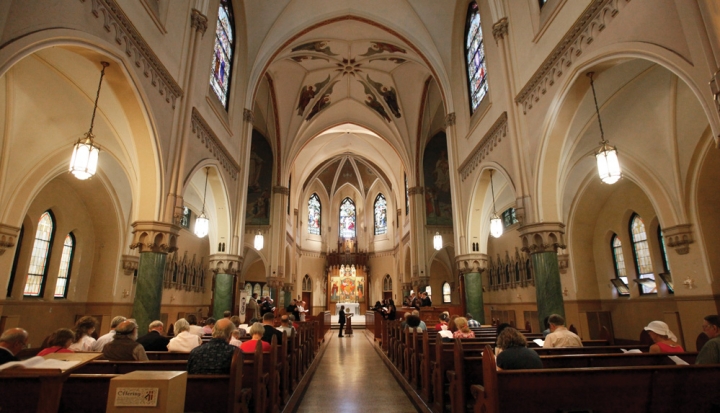




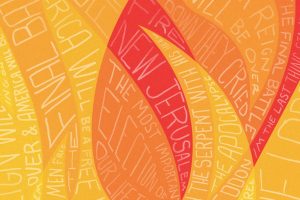

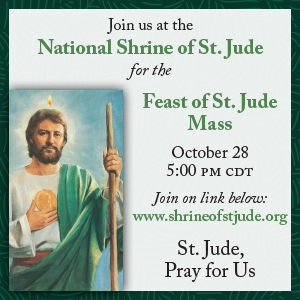
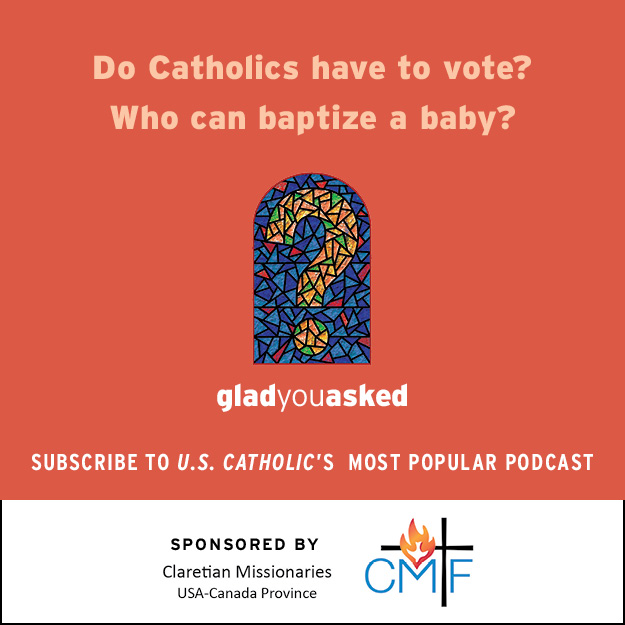




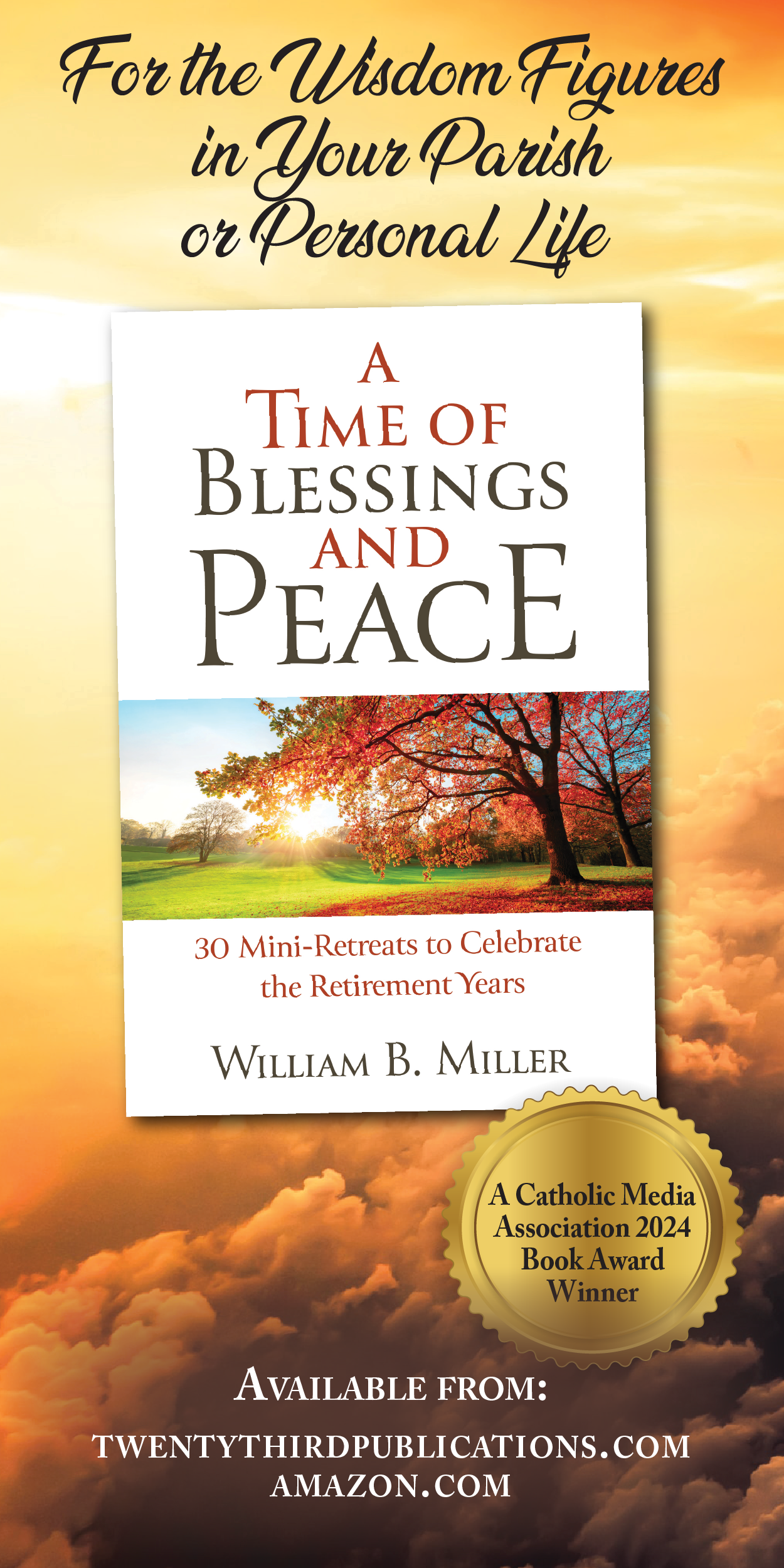

Add comment